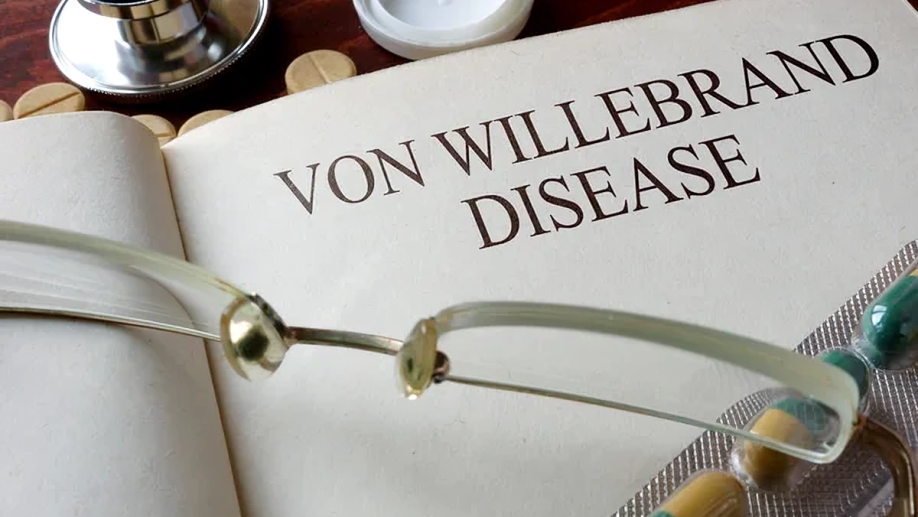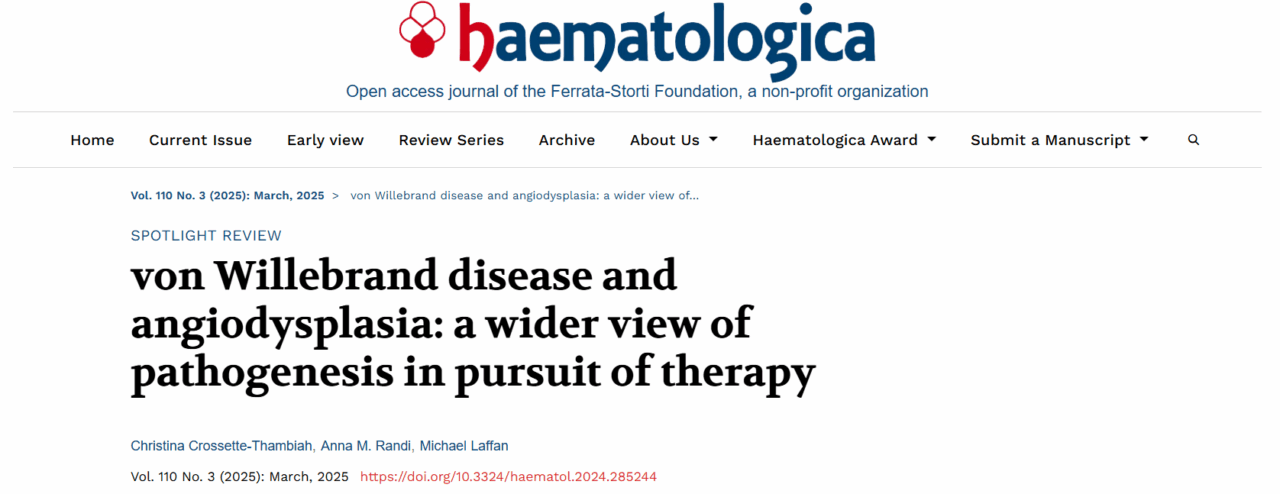
Non-Hemostatic Roles of von Willebrand Factor in Gastrointestinal Angiodysplasia: Mechanisms and Therapeutic Implications
Alan (mail bueno) Nurden shared a post on LinkedIn:
“This is an up-to-date and well-written review highlighting the non-hemostatic role of von Willebrand factor in angiodysplasia of the gastro-intestinal tract; a rare condition that complicates life for patients with von Willebrand disease. The role of VWF multimers in binding angiopoietin-2 and growth factors such as vascular endothelial growth factor and presenting them to endothelial cells via avβ3 is emphasized. The authors discuss the signaling pathways that cause increased angiogenesis in vascular deformation syndromes and how these represent possible novel therapeutic targets. The authors are to be congratulated for an informative and highly readable review. It will be interesting to see how this relates to gastrointestinal bleeding in patients with Glanzmann thrombasthenia where angiodysplasia linked to gastrointestinal bleeding is also seen, often for elderly patients, greatly interfering with their quality of life.”
Read the full paper here.
Title: von Willebrand disease and angiodysplasia: a wider view of pathogenesis in pursuit of therapy
Authors: Christina Crossette-Thambiah, Anna M. Randi, Michael Laffan

Find similar posts on Hemostasis Today.
-
Nov 2, 2025, 14:172019 ESC/EAS Guidelines for the Management of Dyslipidaemias Discussion with Lale Tokgözoğlu and Jeanine Roeters van Lennep
-
Nov 2, 2025, 14:14Nihar Desai: Post-Transplant Dysphagia
-
Nov 2, 2025, 14:13Zia Choudhry Launchs a New Digital Education Platform Designed to Inform and Empower People Living With wAIHA
-
Nov 2, 2025, 14:13Rahul Bhargava: Landmark Study Shows Excellent Outcomes in Pediatric AML Transplant
-
Nov 2, 2025, 10:17ESO: Register for the Live WSC 2025 Highlights Webinar
-
Nov 2, 2025, 14:21Claude Franceschi: I Advise You to Understand the Hemodynamic Pathophysiology of Venous Diseases Rather than Blindly Applying Ablation Techniques or Venous Stent Placement
-
Nov 2, 2025, 14:15Krishna Aragam: Why are (DCM) and Heart Failure About Twice as Common in Individuals of Self-Identified Black Race?
-
Nov 2, 2025, 14:15Raul Santos: Waist-to-Height Ratio and Coronary Artery Calcium Incidence
-
Nov 2, 2025, 14:12Steven AR Murphy: Urolithin A Shows Immune Rejuvenation and Mitochondrial Benefits in New Trial
-
Nov 2, 2025, 10:31Cihan Ay and RIETE Investigators Team Present External Validation of the VTE-PREDICT Score
-
Oct 29, 2025, 07:31The Use of Artificial Intelligence to Improve Detection of Acute Incidental Pulmonary Emboli - JTH
-
Oct 29, 2025, 07:05Shrinidhi Nathany: AI in Diagnostic Medicine
-
Oct 28, 2025, 07:02Aya Berman: AI Model for Predicting Bacteremia
-
Oct 28, 2025, 06:55The New Era of Genomics, AI and Cell Therapy in Hematology and Infectious Diseases
-
Oct 28, 2025, 06:49Lukas Gaats: Researchers Are Building Reproductive Organoids
-
Nov 2, 2025, 14:17Anamaria B: Your Mother Still Runs Part of Your DNA
-
Nov 2, 2025, 10:57Paul Bolaji on Launching The First Centralised Nigerian National Stroke Registry
-
Nov 2, 2025, 10:03Mark Stoffels: A Stroke Can Change Lives in an Instant, But With Timely Expert Care Recovery is Possible
-
Nov 2, 2025, 09:43Louise Bannon Celebrates Barbara Adams Krolak’s 10-Year Anniversary at ISTH
-
Nov 2, 2025, 08:06Sanam Loghavi Recognized at Inaugural Women in Hematology U.S. Focus Meeting 2025
